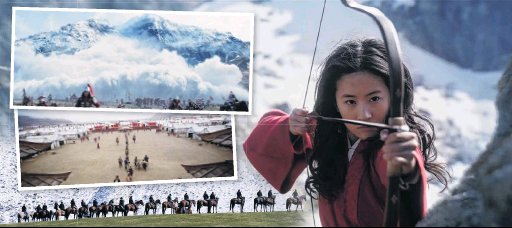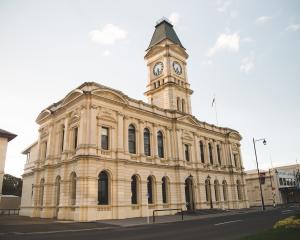
Disney’s Mulan sets the stage for several tourism opportunities in the Waitaki district, film tourism consultant Dr Stefan Roesch says.
Dr Roesch visited Oamaru recently to discuss those opportunities, and the potential impact of the release of the film, with the Waitaki District Council.
Disney’s live-action remake of the animated classic is scheduled to be released in the United States on March 27. It was filmed, in part, in Waitaki in 2018, with Omarama’s Clay Cliffs and the Ahuriri Valley known locations.
At present, the council is developing a plan to prepare for a possible increase in visitors to Birchwood Rd, where the film crew was based.
Waitaki Mayor Gary Kircher said he was “cautiously optimistic” about the film’s impact and wanted the district to capitalise on any opportunities.
The council was investigating the use of storyboards and interactive “augmented reality” displays for tourists and developing plans to manage visitor safety and minimise the impact on landowners and the environment.
“We don’t want to build it and no-one comes, but .. there are some good possibilities,” Mr Kircher said.
On Weibo.com, a Twitter-like social media platform in China, Mulan had 2.47 billion views and 26.91 million discussions. The Lord Of The Rings had 110million views and 142,000 discussions.
“It just shows that Mulan is big,” Mr Kircher said. “It’s such a well-known story in China, there’s a lot of interest.”
While there was no formula to determine if a movie would attract tourists to filming locations, Dr Roesch said film tourism was growing every year.
“In the case of Mulan, we’re talking long travel distances for most audiences around the world coming to New Zealand.
“I believe there’s a little bit of time to prepare. If there is an influx, it’ll probably be really felt the following year, in 2021.”
To promote a region on the back of a movie or TV show, it was important to tell a story and help connect fans to “that fantasy world”.
Storyboards in the Ahuriri Valley should be a “no-brainer” for the council, he said.
“For fans it signifies that they’ve come to the real place – this is where it all happened,” he said.
“Sometimes it’s not about the location, sometimes it’s about the cast and crew, what they’ve done in their spare time, a common link or theme between the film and your area.”
Northern Ireland’s film tourism campaign that hinged on Game of Thrones was a good example of that, he said.
“They have addressed everything from pre-trip inspiration to making sure that the on-site experiences are up to scratch,” Dr Roesch said.
Film tourists, generally speaking, stayed longer and spent more compared with other travellers, he said. And they travelled year-round, extending the tourism season.
“They are mostly free, independent travellers. They are very tech-savvy and like to explore.
“They are looking for a very meaningful experience, as opposed to consumption of places.
“It’s still a small part of the tourism industry, but it’s a trend that’s growing around the world.”











